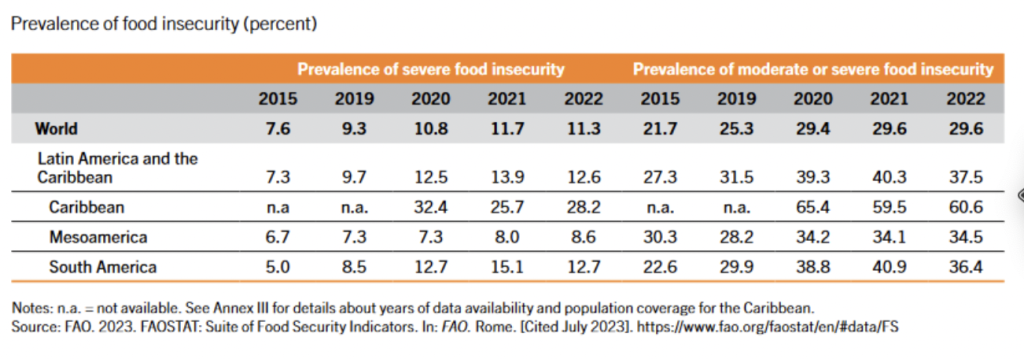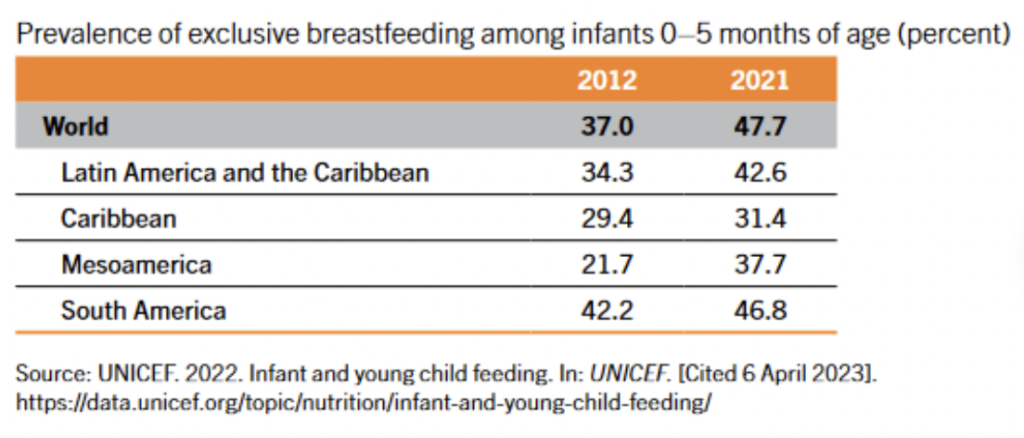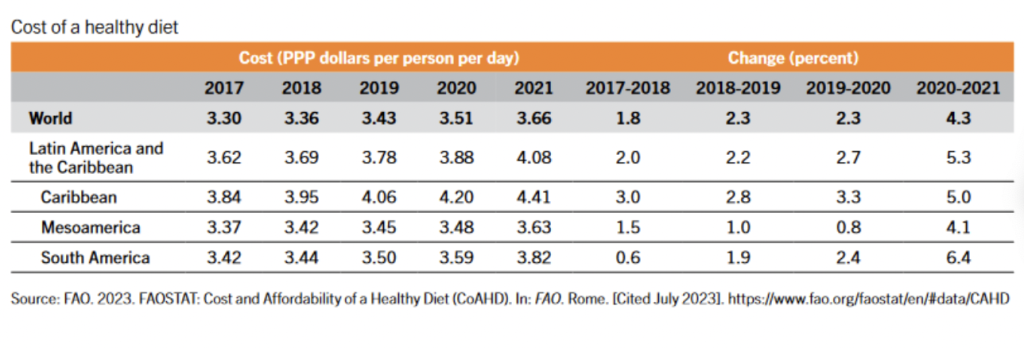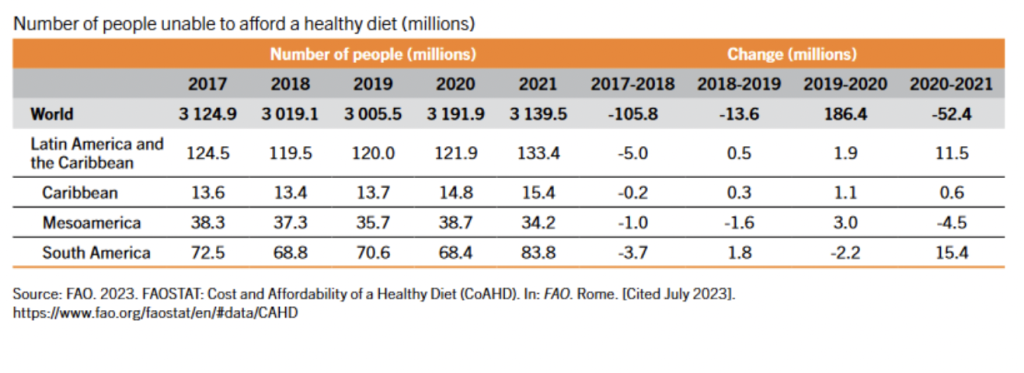Highlights:
-
Progress was made in Latin America and the Caribbean in the fight against hunger and food insecurity, driven by improvements in South America. Between 2021 and 2022, a decrease was observed in the prevalence of both conditions in South America, while in Mesoamerica the prevalence of hunger remained the same and the prevalence of moderate or severe food insecurity increased slightly. In the Caribbean, the prevalence of both conditions increased.
-
Hunger affected 6.5 percent (43.2 million people) of the population in the region. The prevalence decreased from 7 percent in 2021 to 6.5 percent in 2022, but it was still 0.9 percentage point above the level registered in 2019 before the COVID-19 pandemic.

- In 2022, 247.8 million people in the region experienced moderate or severe food insecurity (37.5 percent of the region's population), which represents a decrease of 16.5 million people compared to the previous year. By subregion, this estimate includes 159 million people in South America, 61.9 million in Mesoamerica and 26.9 million in the Caribbean.

- Persistent inequalities in the region have a significant impact on the food security of the most vulnerable. The prevalence of moderate or severe food insecurity continues to affect women more than men; the gender gap narrowed in the region between 2021 and 2022 but was still 9.1 percentage points. In addition, moderate or severe food insecurity was 8.3 percentage points higher in rural areas than in urban areas in 2022.
- Latin America and the Caribbean faces a complex malnutrition problem that includes undernutrition (child stunting and wasting, and vitamin and mineral deficiencies), as well as overweight and obesity.
- In 2022, the prevalence of stunting in children under 5 years of age in the region was 11.5 percent and, although significant reductions have been achieved since 2000, the decline has been slowing down in recent years. No subregion is on track to achieve the 2025 World Health Assembly (WHA) and the 2030 Agenda for Sustainable Development targets for stunting.

- The prevalence of wasting in Latin America and the Caribbean was 1.4 percent in 2022, significantly below the world estimate (6.8 percent). All subregions and most countries are on track to achieve the SDG 2030 target of maintaining wasting levels among children under 5 years of age below 3 percent.

- In Latin America and the Caribbean, the prevalence of overweight in children under 5 years of age reached 8.6 percent in 2022. The prevalence of this condition has been increasing faster in the region compared to world estimates, and it is the only region where no country with data available is on track to achieve the 2030 target of reducing overweight in children under 5 years of age to less than 3 percent.

- In the region, anaemia affected 17.2 percent of women aged 15 to 49 years in 2019, which is significantly below the world estimate of 29.9 percent.

- In Latin America and the Caribbean, obesity affected nearly a quarter of the adult population in 2016, which is the last year with data available for this indicator. This prevalence was well above the world estimate (13.1 percent).

- The prevalence of exclusive breastfeeding among infants 0–5 months of age was 42.6 percent in the region in 2021, which was below the global estimate of 47.7 percent. However, there have been significant improvements in this indicator since 2012.

- The prevalence of low birthweight in Latin America and the Caribbean was lower than the world estimate. In 2020, the prevalence was 9.6 percent compared to 14.7 percent globally, with important differences among subregions.

- The average cost of a healthy diet globally was 3.66 purchasing power parity (PPP) dollars per person per day in 2021. Latin America and Caribbean had the highest cost of a healthy diet compared to all other regions at 4.08 PPP dollars per person per day, followed by Asia (3.90 PPP dollars), Africa (3.57 PPP dollars), North America and Europe (3.22 PPP dollars), and finally Oceania (3.20 PPP dollars).

- Between 2020 and 2021, the cost of a healthy diet increased by 5.3 percent in the region. The surge could be explained by the rise in food inflation driven by lockdowns, disruptions in the global supply chain, and labour shortages that occurred during this period. In 2021, 133.4 million people could not afford a healthy diet in the region, which represents 22.7 percent of the population. This meant an increase of 11.5 million people compared to 2020. In the Caribbean subregion, this figure rose to 57 percent, followed by Mesoamerica with 22.2 percent and South America with 20.6 percent.

| Year of publication | |
| Authors | |
| ISBN | 978-92-5-138358-2 |
| Geographic coverage | Latin America and the Caribbean |
| Originally published | 14 Nov 2023 |
| Related organisation(s) | FAO - Food and Agriculture Organization of the United NationsWFP - World Food ProgrammeUNICEF - United Nations Children's FundIFAD - International Fund for Agricultural Development |
| Knowledge service | Metadata | Global Food and Nutrition Security | Food security and food crises | BreastfeedingCost of the dietHealthy dietStuntingWasting |
| Digital Europa Thesaurus (DET) | hungermalnutritionObesity |
